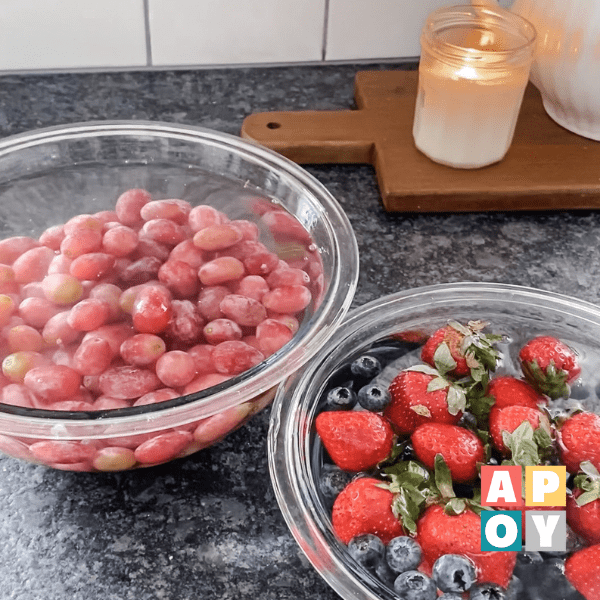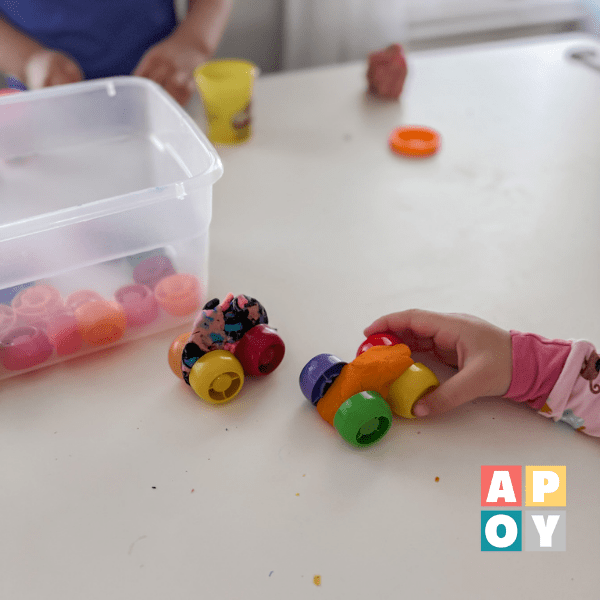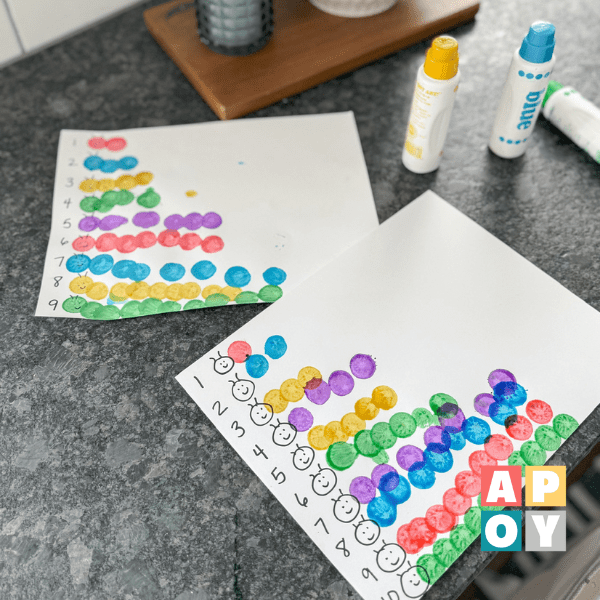How to Clean Fruit and Vegetables: A Simple Guide to Safeguard Your Family’s Health
Keep your family safe with simple, natural ways to clean fruit and veggies! Learn why cleaning produce matters and how to make your own DIY fruit and vegetable wash with vinegar—no harsh chemicals needed. It’s easy, effective, and healthy!

This blog post may contain affiliate links. When you make a purchase through these links, I may earn a small commission, at no additional cost to you. I only recommend products that I genuinely believe can benefit you and your family! Your support helps maintain and improve all things A Pop of You. Thanks so much!
A Naturally Clean Approach: Making Your Own Fruit & Veggie Wash
Let’s be real: as parents, we’re always looking for ways to make our family’s meals a little healthier (and our lives a little easier). We load up our carts with fresh fruits and veggies, feeling all virtuous, but then comes the realization—what exactly is lurking on that shiny apple or those picture-perfect grapes? Dirt, bacteria, pesticides? Yikes.
But don’t worry, this isn’t a guilt trip. It’s a quick, easy way to feel good about what’s going on your family’s plates. Let’s chat about why cleaning your produce is a big deal and how you can whip up your own natural fruit and veggie wash with stuff you probably already have in your kitchen. Bonus: no fancy sprays or unpronounceable ingredients needed.
Why Bother Washing Fruits and Veggies?
Sure, they look clean, but here’s the scoop:
- Pesticides: Even conventionally grown produce comes with an unwanted side of residue. A good rinse helps you nix the chemicals you don’t want showing up at snack time.
- Bacteria: Fruits and veggies are handled a lot before they make it to your fridge—fields, trucks, grocery store shelves, and finally, sticky toddler hands. Giving them a proper clean can help avoid any post-dinner tummy troubles.
DIY Fruit & Veggie Wash: The Two-Ingredient Wonder
Store-bought produce sprays? Overpriced and overrated. All you really need is vinegar. Here’s how to make your own wash in under a minute (no, really).
What You’ll Need:
- 1 cup distilled white vinegar
- 2 cups water
How to Make It:
- Mix the vinegar and water in a bowl or container. Stir it up like the pro chef you are.
- Pour it into a spray bottle (fancy) or keep it in the bowl if you’re cleaning a whole batch.
- Rinse your produce first to get rid of any visible dirt.
- Spray or soak the fruits and veggies in the vinegar solution for 1-2 minutes. Swirl them around if you’re feeling fancy.
- Rinse again with water to get rid of any vinegar-y tang.
- Pat dry (or air dry, because who has time for extra steps?).
Why Vinegar Works Like Magic
There’s a reason vinegar has been everyone’s go-to cleaner since forever. It’s affordable, non-toxic, and totally effective. The acidity breaks down grime, bacteria, and even some pesticides. Plus, it’s eco-friendly, so you can feel doubly good about using it.
Pro Tips for Specific Produce
Not all fruits and veggies are created equal. Here’s how to give each type the VIP treatment:
- Leafy Greens: Swish them in a bowl of water like they’re at a spa, rinse well, and dry with a salad spinner or a clean towel.
- Berries: Rinse gently under running water. They’re delicate little guys, so be kind.
- Root Veggies: Bust out that vegetable brush and give them a good scrub. They’ve been through the dirt—literally.
- Grapes & Cherries: Rinse thoroughly and remove stems or leaves before serving.
Clean Produce, Happy Family
Look, life is busy. But taking two minutes to clean your fruits and veggies? Totally worth it. You’ll feel good knowing your family is munching on snacks that are fresh, safe, and free of unwanted extras. Plus, this little habit might just make you feel like you’ve got your life together—even if you’re wearing yesterday’s leggings and reheating your coffee for the third time.
So go ahead, give this DIY fruit and veggie wash a try, and enjoy the peace of mind that comes with it. Because as parents, we deserve those small wins. Cheers to cleaner apples and happier snack times!

Hey There,
I’m Katelyn!

Hi, I’m Katelyn! Join me for creative, intentional family fun and practical home management tips! Parenting is hard, but I’ve got the tools to help you create a calmer, more intentional home!

BROWSE MY
TOY RECS

resourceS

SHOP LEARNING RESOURCES


Subscribe to the empty mug club

GET OUR DAILY TO-DOS FREE!
Plus, get the latest achievable learning activities, easy recipes, storage solutions, teacher-approved toy suggestions + exclusive discounts to Becoming You learning resources straight to your inbox!


About Katelyn Collier , MAT
Katelyn Collier is a former elementary school teacher turned homeschooling mom of three and the founder of A Pop of You. She’s passionate about helping families step away from the pressure of today’s fast-paced culture and create homes filled with presence, joy, and balance. Through her resources and podcast, she shares simple, practical tools to reclaim childhood and make family life feel lighter and more intentional.
Masters DEgree in elementary education
VOICE OF BECOMING UNPOPULAR, A PODCAST COMING SOON!
CREATOR OF BECOMING YOU, A KIDS’ LEARNING RESOURCE LINE


FIND MORE INSPIRATION
Even More Achievable Ideas















